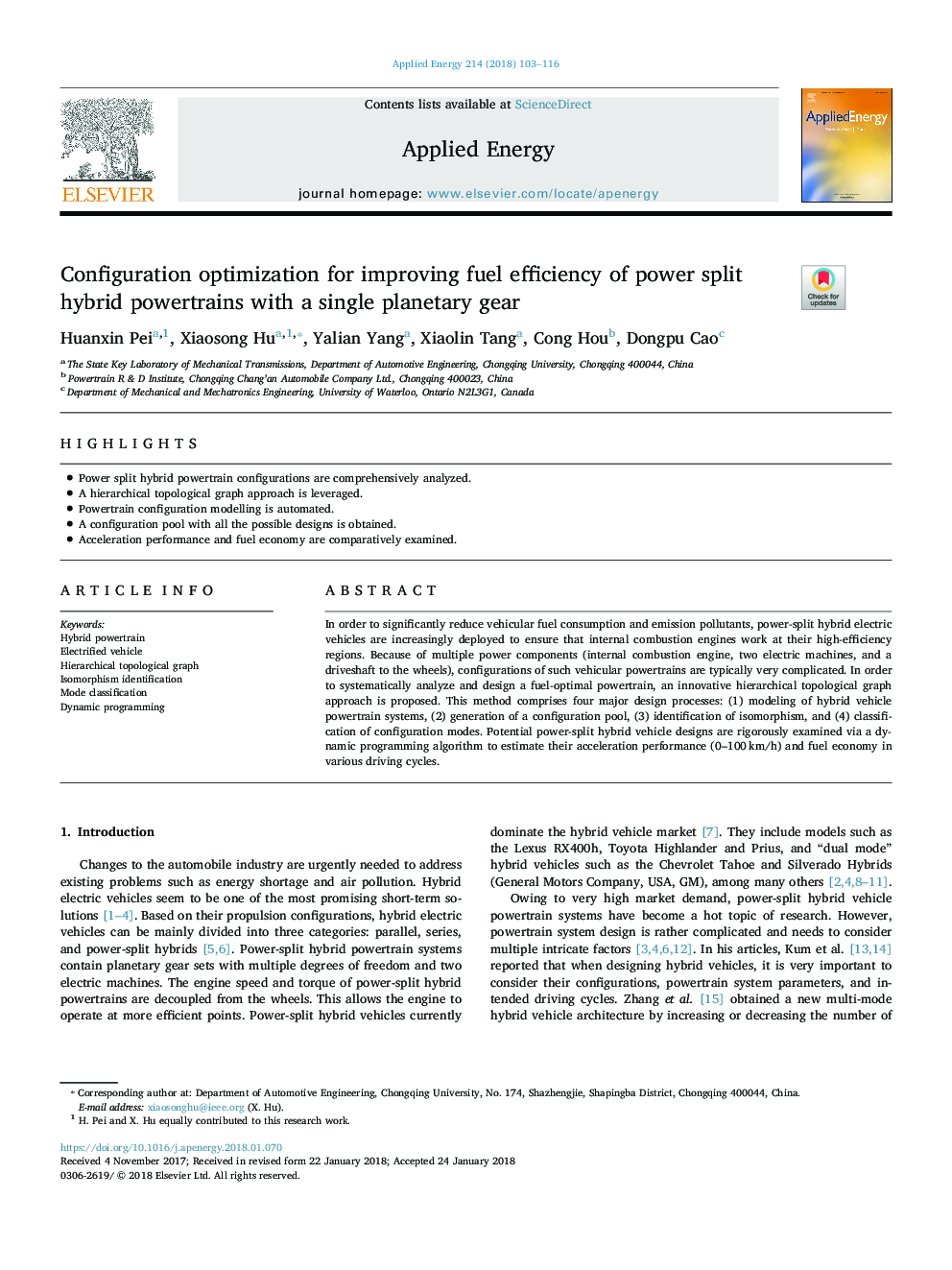| Article ID | Journal | Published Year | Pages | File Type |
|---|---|---|---|---|
| 6680708 | Applied Energy | 2018 | 14 Pages |
Abstract
In order to significantly reduce vehicular fuel consumption and emission pollutants, power-split hybrid electric vehicles are increasingly deployed to ensure that internal combustion engines work at their high-efficiency regions. Because of multiple power components (internal combustion engine, two electric machines, and a driveshaft to the wheels), configurations of such vehicular powertrains are typically very complicated. In order to systematically analyze and design a fuel-optimal powertrain, an innovative hierarchical topological graph approach is proposed. This method comprises four major design processes: (1) modeling of hybrid vehicle powertrain systems, (2) generation of a configuration pool, (3) identification of isomorphism, and (4) classification of configuration modes. Potential power-split hybrid vehicle designs are rigorously examined via a dynamic programming algorithm to estimate their acceleration performance (0-100â¯km/h) and fuel economy in various driving cycles.
Related Topics
Physical Sciences and Engineering
Energy
Energy Engineering and Power Technology
Authors
Huanxin Pei, Xiaosong Hu, Yalian Yang, Xiaolin Tang, Cong Hou, Dongpu Cao,
